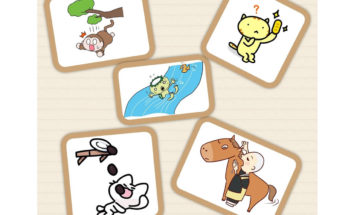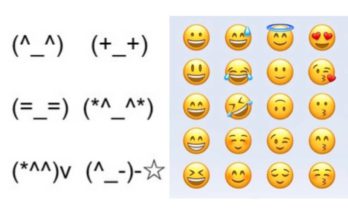In my last article, I told you that there are more than 500 counter words, and about 100 of them are actually used in everyday life. However, I could only share some of them last time. Therefore, I’d like to share with you counter words this time, especially related to vehicles, which is commonly used in daily life.
1. Basic Counting
The basic counting system used for vehicle-related numbers uses the following counting system.
◆1/ Ichi いち, 2/ Ni に, 3/ San さん, 4/ Yon よん, 5/ Go ご, 6/ Roku ろく, 7/ Nana なな, 8/ Hachi はち, 9/ Kyu きゅう, 10/ Jyu じゅう
2. Type of Vehicles
1) How to count Cars
■~Dai 台 (だい)
When you are counting any kind of car, you can use ” dai 台 (だい).” In Japan, “dai” is commonly used to count machines, equipment, and vehicles. A car is generally treated as a piece of machinery or equipment, so you can use “dai” when counting any kind of vehicle, passenger cars, taxis, buses, trucks, sports cars, work vehicles, motorcycles, bicycles, etc.
Counting :
1台/ Ichi-dai いちだい, 2台/ Ni-dai にだい, 3台/ San-dai さんだい,4台/ Yon-dai よんだい, 5台/ Go-dai ごだい, 6 台/ Roku-dai ろくだい,7台/ Nana-dai ななだい, 8台/ Hachi-dai はちだい, 9台/ Kyu-dai きゅうだい, 10台/ Jyu-dai じゅうだい



★Trivia★
Other uses of “dai だい” include TV, TV stands, computers, copy machine, refrigerators, things like that. Since they are treated as a type of machine or equipment, they are counted using “dai だい” just like cars. For example, “one TV is 1-dai いちだいの TV” and “two TV stands are 2-dai にだいの TV stands” are used.
2) How to count Trains
■~Ryo 両 (りょう)
You can use the expression “ryo りょう“ to count the number of trains. This counting system comes from the historical background of the development of railroads in Japan. In Japan, the first railroads were introduced as horse-drawn railroads, and followed by steam locomotives. Many steam locomotives in that era had an even number of wheels, and “ryo りょう” became the unit of measurement for the number of train cars. For example, “a train with 8-ryo / はちりょうのでんしゃ (hachi-ryu no densha)” means a train organized with eight train cars, and you can also count that entire train as 1-ryo いちりょう (ichi-ryo). In other words, you can refer to the entire train as a “ichi-ryo no densha いちりょうのでんしゃ” or an “hachi-ryo no densha はちりょうのでんしゃ”.
Counting:
1両/ Ichi-ryo いちりょう, 2両/Ni-ryo にりょう, 3両/San-ryo さんりょう, 4両/Yon-ryo よんりょう, 5両/Go-ryo ごりょう, 6両/Roku-ryo ろくりょう, 7両/Nana-ryo ななりょう, 8両/Hachi-ryo はちりょう, 9両/Kyu-ryo きゅうりょう, 10両/Jyu-ryo じゅうりょう



★Trivia★
The yellow Shinkansen seen behind the four trains is called “Doctor Yellow.” Its role is to check the safety and performance of the Shinkansen trains and tracks, including inspections and test runs. It is said that you’ll be happy when you see it because it’s rare to see it running. I hope you can see it.
3) How to count Aircraft
■~Ki 機 (き)
It is common to count all types of aircraft as “ki 機 (き),” including fighter planes, small aircraft (such as Cessnas), and large passenger planes. They are all counted using “ki” regardless of size. In English, airplanes are generally called “aircraft,” and “ki” has been used as the Japanese translation of this word. Therefore, the unit “ki” has also come to be used when counting aircrafts.
Counting:
1機/ I-kki いっき, 2機/ Ni-ki にき, 3機/ San-ki さんき, 4機/ Yon-ki よんき, 5機/ Go-ki ごき, 6機/ Ro-kki ろっき,7機/ Nana-ki ななき, 8機/ Hachi-ki はちき, 9機/ Kyu-ki きゅうき, 10機 / Ju-kki じゅっき



4) How to count ships
When counting ships, as with other vehicles, use the basic numbers, one いち, two に, three さん…, are used. However, I think it is the most difficult, because each type of ship has a completely different way of counting. The reason is that there are many ways to count ships may be due to the fact that Japan is an island nation. Countries with close ties to the sea tend to have a wealth of terms and ways of talking about ships and vessels. These counts are derived from the maritime culture and history of navigation, and the insular nature of Japan is the reason behind this.
There is no strict distinction in usage, but smaller vessels such as boats tend to be counted as “~艘 / Sou そう” and larger vessels (tankers, cruise ships, etc.) as “~隻 / Seki せき.”.Competition yachts and boats are counted in “~艇 / Tei てい”. However, yacht racing boats are customarily counted in “~杯 / Hai はい.” Ships are sometimes counted in “~杯 / Hai はい” because of their bulging bodies.
■~Tei / 艇 (てい)・・Small boat (a yacht, a sports-specific boat, a submersible)


■~Sou / 艘 (そう)・・・・Medium and small boats (a barge, a sailboat, a boat)


■~Seki / 隻 (せき)・・・・Large vessel (a cruise ship, a tanker, a cargo vessel)


■~Kan / 艦 (かん)・・・・Fighting ship, Battleship, Cruiser, etc
These vessels can be counted not only by “kan かん” but also by “seki せき.”


Conclusion
What I found interesting is that cars are considered a type of machinery and are all roughly counted using “dai だい;” there is no complicated way to count, especially for vehicles, cars, trains, and aircrafts, which have developed in modern times. However, as for the ship, I’d say that the counting system differs in detail depending on the type of ships because Japan is an island nation, and Japanese people have long used ships as vehicles. To be honest, even I, a Japanese person, would be confused. However, if you can change the way you count depending on the type of ships, I must say you are cooler than Japanese people. Thank you for reading to the end.
If you haven’t read my last article on “Unique Way to Count Things in Japan”, check it out at the link below!
Business training instructor. I’m originally from Takarazuka in Hyogo Prefecture in the Kansai area. Now I live in Yokohama. I love exercising, traveling, watching movies, art, and nature.





 HTJ has a YouTube page! Check it out
HTJ has a YouTube page! Check it out
Hi Mieko,
Great article! Now I have to bookmark it the next time I need to remember my counting words! By the way, would I count Submarines the same way as naval vessels?
Thank you so much for writing this! It’s a complicated topic, but you explained it well! Nice job 🙂
Thanks for leaving your thoughtful comment and modifying my article to make it easier to read on a smart phone. Thanks a million!
De nada! 🙂 You rock!
Hi Manning!
Thanks for reading my article and leaving a comment. I really hope this article will help you learn Japanese. BTW, regarding submarines, we use “艇 tei” when counting them. However, small submarines are called 潜水艇 sensuitei, so “tei” is used, and large submarines are called 潜水艦 sensuikan, so “kan” is apparently used. Actually, I was not sure whether to include the submarine in the article or not, but as a result I did not. I was impressed with you for noticing that. I think Japanese is really difficult!